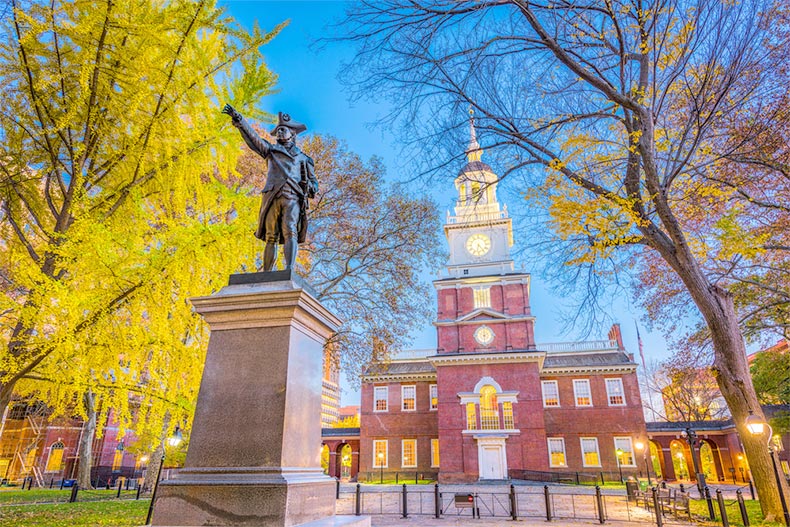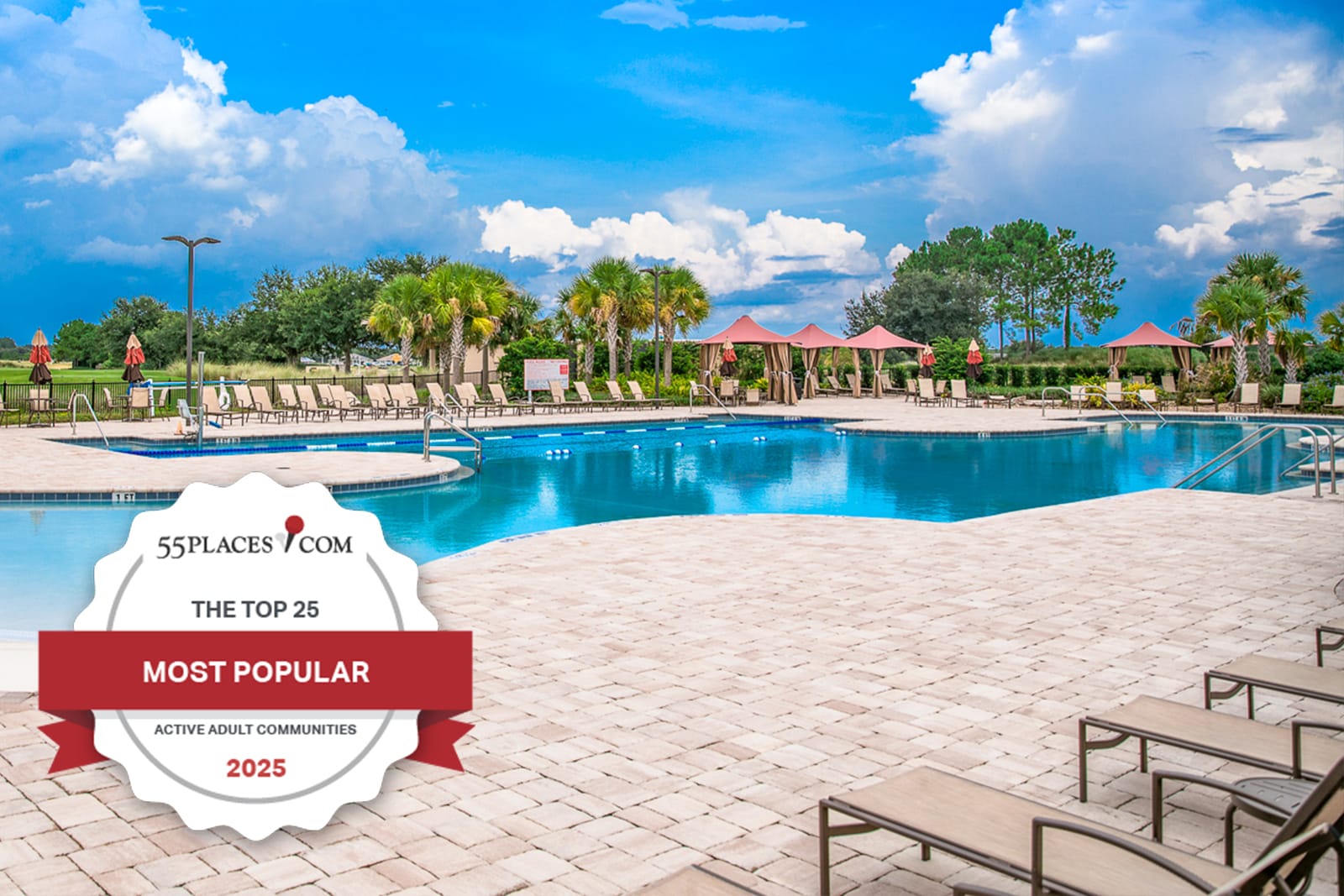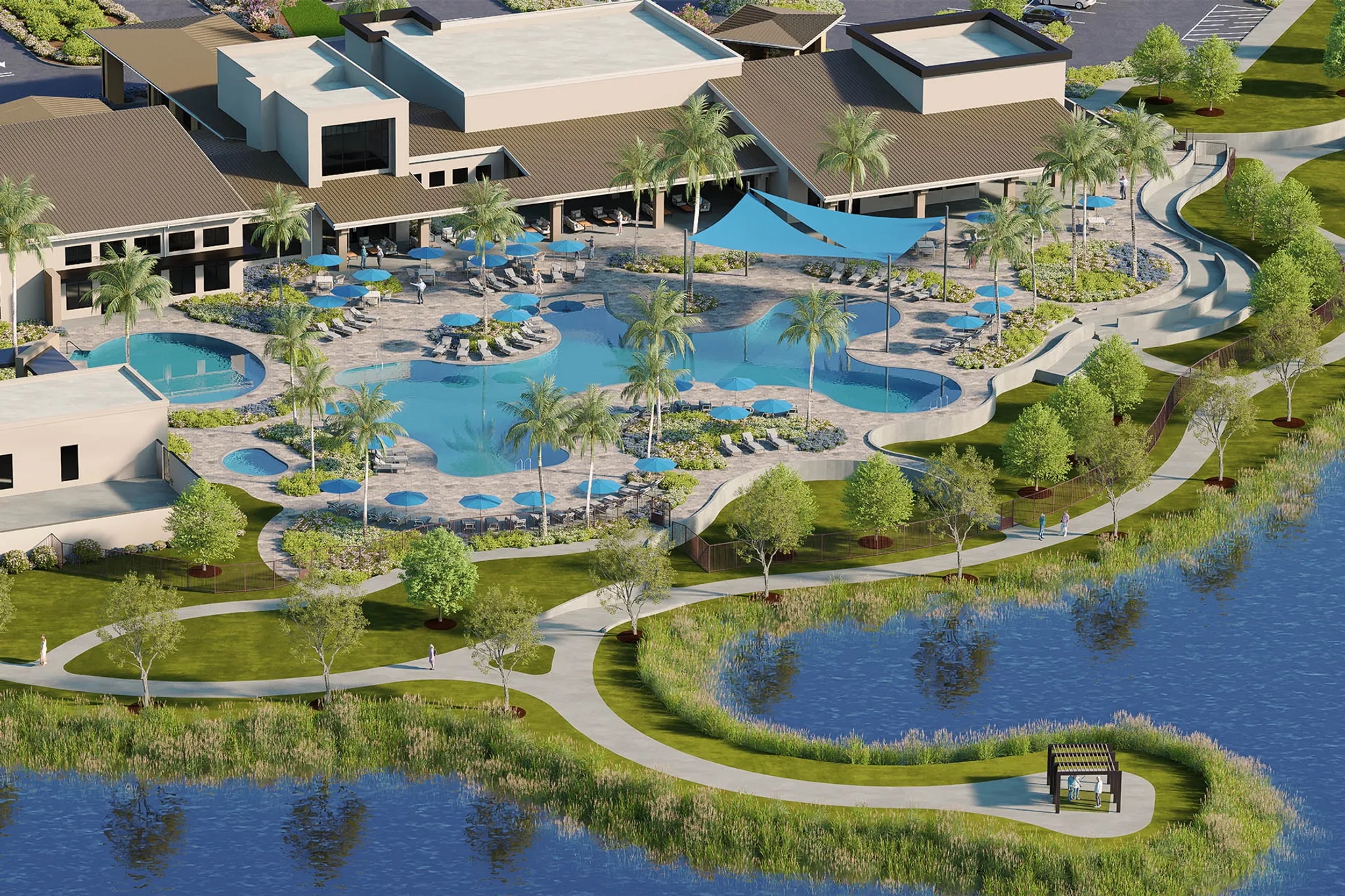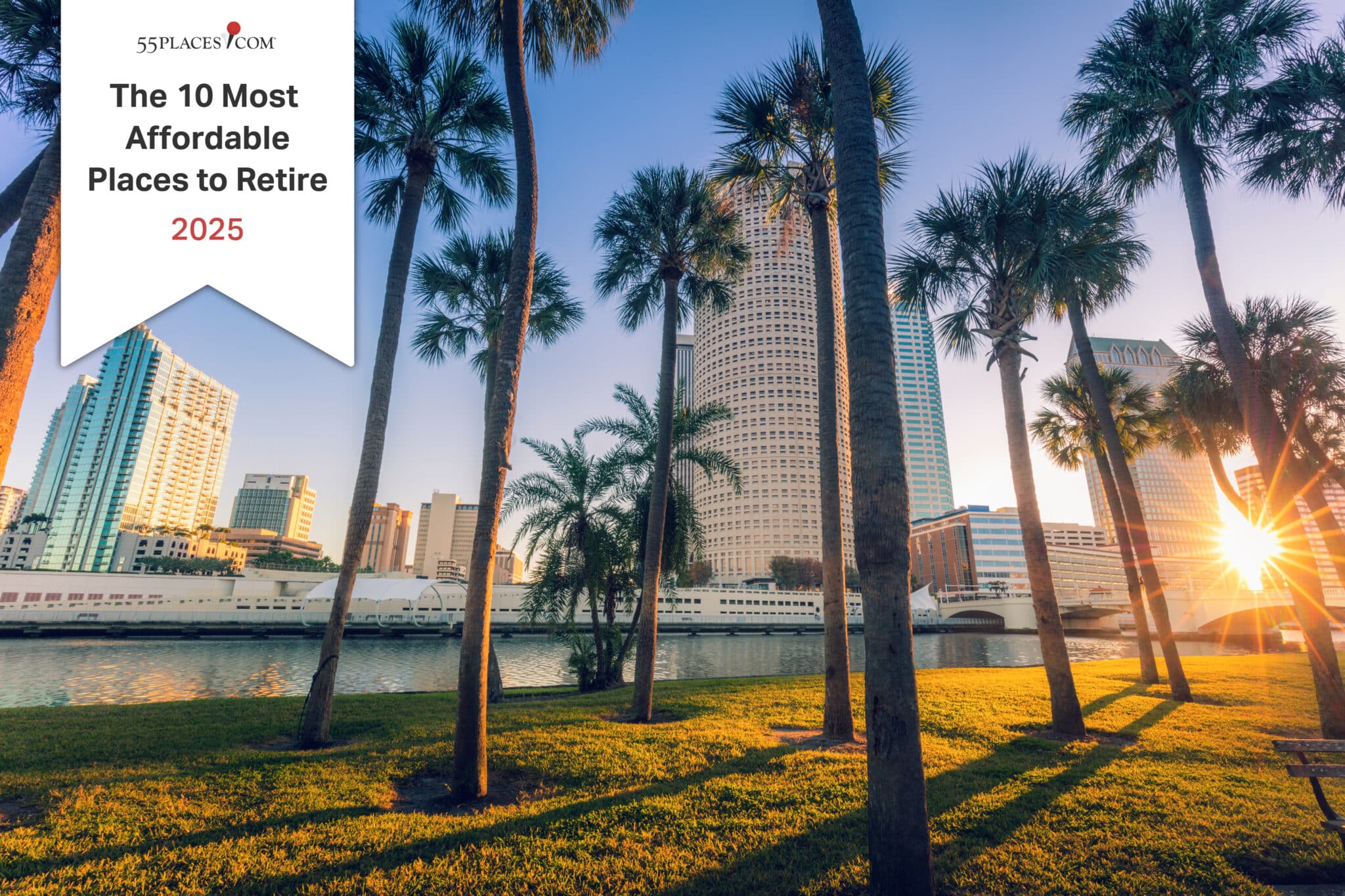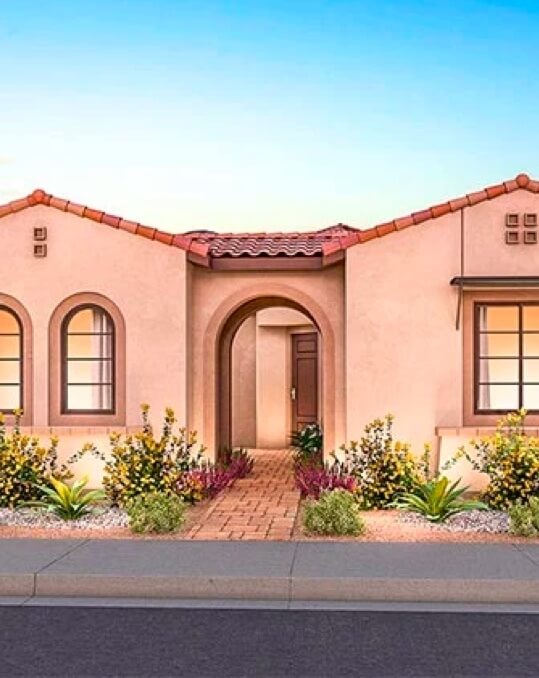Though it was often underrated as a retirement destination in the past, Pennsylvania is starting to generate more buzz among active adult homebuyers. The state houses many historic landmarks in Philadelphia, and it’s home to the famous Frank Lloyd Wright-designed house Fallingwater. Pennsylvania also has pet-friendly hiking trails (Montour Trail is one example), ski resorts (check out Big Boulder), and endless other fantastic indoor and outdoor landmarks worth exploring.
It’s a big state, so to make your home search more manageable, 55places has broken Pennsylvania into three regions: western, central, and eastern. Towards the west, we have the Pittsburgh area, and in the middle, there are cities like Gettysburg, Harrisburg, and Lancaster. In the east, we have large cities like Philly and Allentown, plus smaller ones like Pottstown and Reading.
The landscape changes as you move around the state, and there are plenty of other factors to think about as you approach your homebuying decision. This guide will help you get moving in the right direction.
Retiring in Pennsylvania Pros and Cons
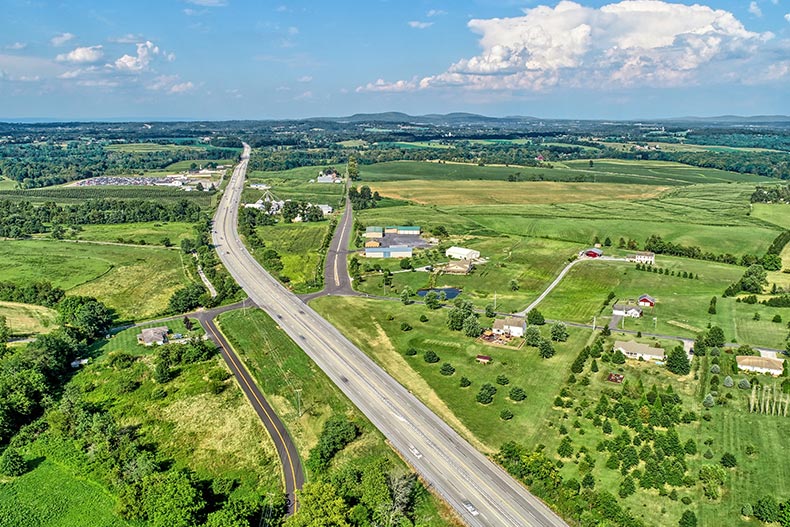
Pros
A Low Cost of Living
We’ve said it before and we’ll say it again: Pennsylvania is a retirement-friendly state because it has a low cost of living and tax advantages for retirees, especially when compared to its surrounding states. According to The Ascent, the median home price in the U.S. as of the second quarter of 2024 was $412,300, but in Pennsylvania, it was $271,911.
Excellent Health Care
Pennsylvanians also enjoy a high quality of life because of the outstanding health organizations and universities here. Two of the top hospitals are UPMC Shadyside in Pittsburgh and Penn Presbyterian in Philadelphia; two of the top universities are Bucknell in Lewisburg and Dickinson in Carlyle.
Plenty of Outdoor Fun
For active adults seeking endless recreation opportunities, Pennsylvania has countless golf courses, parks, forests, rivers, farmland, covered bridges, and mountains. The state also has several popular sports teams (the Pirates, the Steelers, the Eagles, and the Phillies).
Cons
The Cold
Pennsylvania can get quite cold in certain regions, and wintertime brings snowstorms most years. If you live near the mountains or farther north, you may experience more of the white stuff than at lower elevations. There will be more on this topic below.
Far From the Beach
If you like the beach, you’ll have to drive further than your New Jersey and New York neighbors, since the only body of water that meets PA’s border is Lake Erie.
Liquor Laws
The state has some unusual liquor laws with restrictions that new residents should become familiar with.
Taxes and Traffic
Other cons (depending on where you live) might include high property taxes and heavy traffic, especially near some of the larger cities.
Pennsylvania Climate
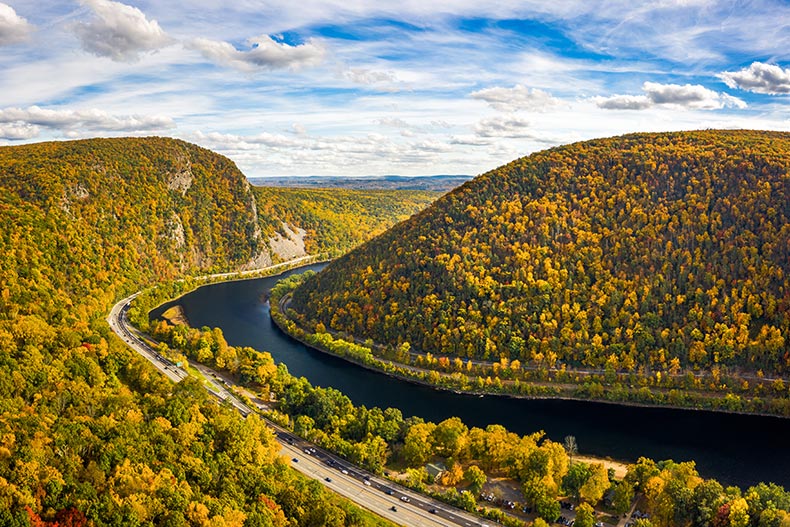
Pennsylvania experiences all four seasons, and it can see some heavy precipitation and hot weather. For example, from 2018 to 2019, Harrisburg’s yearly snowfall was 40.9 inches, State College’s was 40, and Philly’s was 17.1. Average high temps for August are 80ºF for State College and 83ºF/84ºF for Harrisburg and Philadelphia. It’s a large state with varied weather patterns throughout, so researching the weather history for the area that you’re interested in is highly recommended.
Pennsylvania Taxes
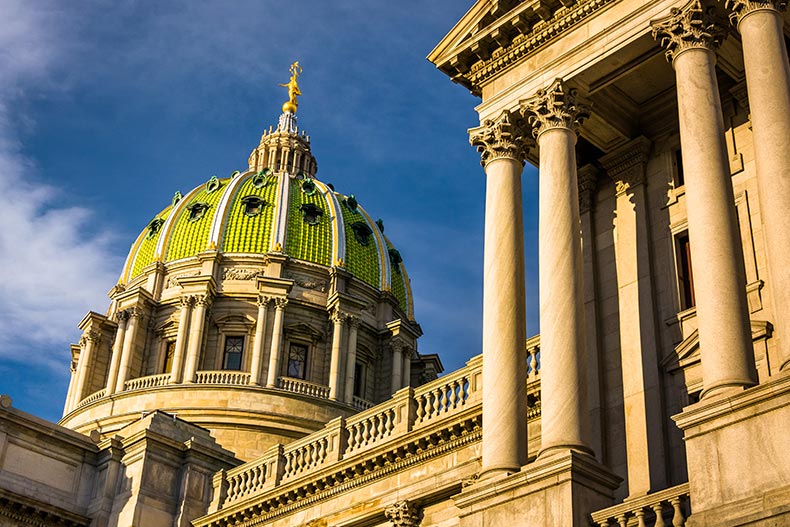
The Pennsylvania sales tax is 6% (pharmaceutical drugs, clothing, residential heating fuels, and food are all exempt), and income tax is levied at the rate of 3.07% against taxable income. Municipalities may also collect income taxes, also referred to as “Local Earned Income Tax.” Smaller cities like Lancaster can collect two percent or less, but larger ones like Philly usually collect more. The state gas tax is substantial at 58 cents per gallon for regular gasoline.
There’s also an inheritance tax of 4.5% for direct descendants such as children or grandchildren. This tax is 12% for siblings, and 15% for other heirs.
Pennsylvania Property Taxes
Pennsylvania property taxes are at a 1.36% average effective rate, which is based on market value. This varies widely depending on where the property is located, but it can be found on 55places.com listings.
Pennsylvania Retirement Income Taxes
Pennsylvania’s income tax rate is a flat 3.07%, so every state taxpayer pays this same percentage of their taxable income. However, there are no standard deductions or exemptions, and there are only three categories of itemized deductions:
- 529 college savings plan contributions
- medical savings account contributions
- health savings account contributions
Pennsylvania Tax Exemptions for Seniors
Retirement income (such as 401(k)s, Social Security, pensions, and IRAs) are exempt from tax in Pennsylvania. Seniors, widows and widowers, and adults over 50 with disabilities may also qualify for property tax rebates of up to $1000.
Pennsylvania Health Care
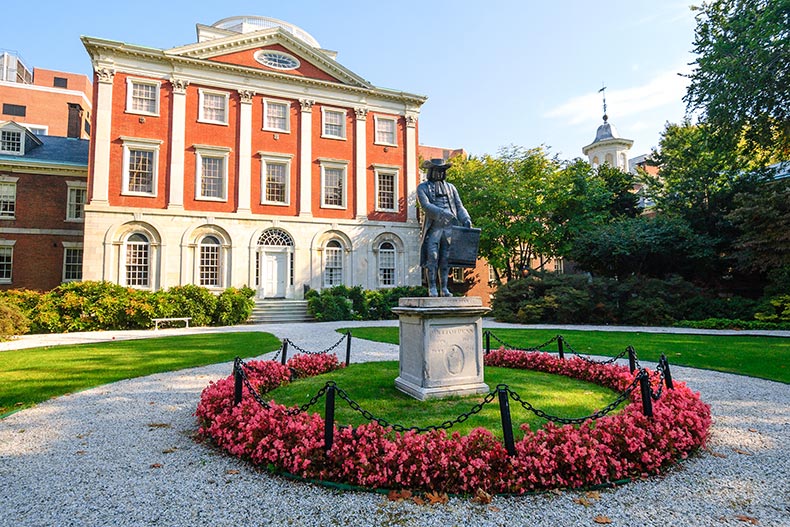
U.S. News & World Report reviewed and ranked more than 200 Pennsylvania hospitals in the state’s major metropolitan areas. The larger cities like Philadelphia, Pittsburgh, Allentown, Harrisburg, and Lancaster all had high-performing facilities. Some that we haven’t already mentioned include Lehigh Valley Hospital in Allentown, Milton S. Hershey Medical Center, and UPMC Pinnacle in Harrisburg.
There are different kinds of health insurance available to active adults as well, including Medicaid and CHIP, Medicare, plus commercial fully-insured or self-insured. Interested parties can contact the Pennsylvania Insurance Department for more information.
Where to Live in Pennsylvania
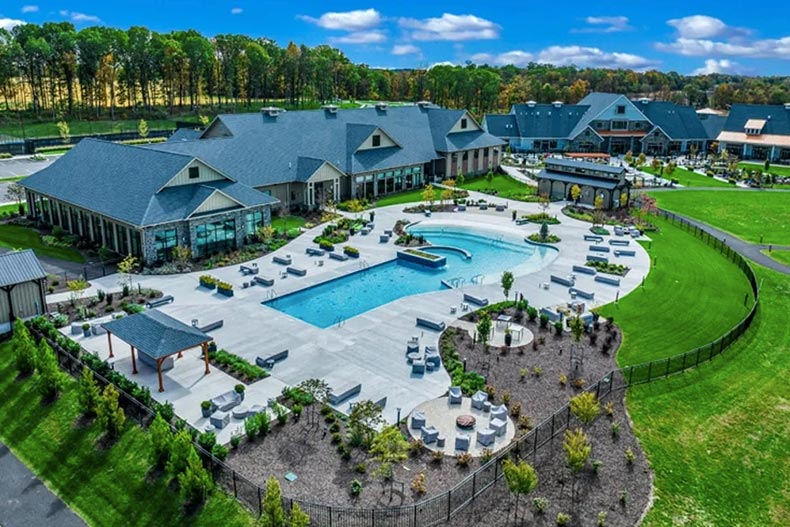
Eastern Pennsylvania
Our Eastern Pennsylvania 55+ neighborhoods are clustered around the cities of Allentown, Philadelphia, and Reading. With a population of over 1.5 million Philly is the largest city in the state, and it has top historical and cultural attractions like The Philadelphia Museum of Art, South Street, and Constitution Hall. Folks can hop on the PATCO trains and buses (and avoid the heavier traffic) to get into town to enjoy these landmarks as well as the excellent restaurants, theater, and shopping. For those who live closest to the city, the cost of living is above the national average.
Allentown has a population of around 120,000, and it has undergone revitalization recently, proof of which can be seen at Allentown Symphony Hall and Lehigh Canal Park. The cost of living here is slightly below the national average.
The population in Reading is about 88,000, and its cost of living is well below the national average. Smaller in scale than other parts of Eastern Pennsylvania, it’s near Bear Creek Mountain, and it’s known as the “Outlet Capital of the World.” There are also plenty of farmers markets, wineries, and antique shops for active adults to take advantage of.
Two of our favorite active adult communities in Eastern Pennsylvania include Douglass Village in Berks County near Reading, and Regency at South Whitehall in Allentown.
Central Pennsylvania
You’ll find 44 active adult communities on our Central Pennsylvania page, stretching from Strasburg to Fayetteville. Three of its counties (Northumberland, Snyder, and Union) are in the Susquehanna River Valley, which includes the river plus scenic countryside and valleys.
The Lancaster-Ephrata area is also quite special as it’s home to the country’s largest Amish population. Visitors and locals come here to explore its covered bridges, farmlands, and charming shops. The cost of living in this region is slightly below the national average, and residents enjoy a slower pace of life and plenty of opportunities to enjoy the beautiful outdoors. Festivals are also big here, including the Selinsgrove Market Street Festival, Beaver Community Fair, Bloomsburg Fair, and the Milton Fringe Festival.
Gettysburg and Harrisburg are also in Central Pennsylvania, and both have historic attractions like Gettysburg National Park and the Pennsylvania State Museum. Gettysburg’s population is around 7,500 while Harrisburg’s is approximately 49,000. The cost of living in Gettysburg is just below the national average, and Harrisburg’s is a good deal lower.
There are some very affordable 55+ communities here, with some in the more rural areas offering homes in the $100k price range. Two of Central Pennsylvania’s top active adult neighborhoods are Heritage Strasburg and Amblebrook in Straban Township.
Western Pennsylvania
Our Western Pennsylvania 55+ neighborhoods are all near Pittsburgh, an up-and-coming area that also benefited from revitalization over the past years. As the second-largest city in the state, its population is around 300,000, and it’s located at the meeting of the Allegheny, Ohio, and Monongahela Rivers. Called “Steel City” and “City of Bridges,” Pittsburgh now has a thriving, walkable downtown area with large companies like Facebook and Google setting up offices alongside the city’s parks, restaurants, museums, and shops.
Its cost of living is slightly below the national average, and most of the retirement communities that have sprouted up around the city offer new construction. Prices start in the low $200s, and Scenic Ridge, the farthest one away, is in the town of Harmony about 30 miles north.

